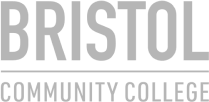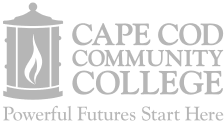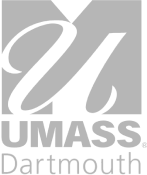PRACTICE TIERS SELF KSAs
 Foundational
Foundational
Knowledge:
– Recognizing the context and focus of ARE initiatives:
– Understanding the history of ARE, the different approaches to ARE, and the specific goals of ARE initiatives in higher education
Skills:
– Being aware of dissonance and discrepancy as opportunities for deeper inquiry into ARE: Being able to identify and reflect on moments of dissonance or discrepancy in ARE work, such as when there is a mismatch between stated goals and actual practices, and knowing when to be deliberate and intentional about acting on ARE efforts (addressing, interruption, and correction), especially regarding implicit bias and microaggressions as structural/ systemic barriers and obstacles:
Actions:
– Being able use existing tools to gather data on ARE; take steps to address implicit bias and microaggressions as structural/ systemic barriers and obstacles, even when it is difficult or uncomfortable
 Intermediate
Intermediate
Knowledge
– Actively observing and perceiving the ARE dynamics within the workplace
– Being attentive to instances of implicit bias and microaggressions as structural/ systemic barriers and obstacles
– Understanding the effects of implicit bias and microaggressions as structural/ systemic barriers and obstacles on individuals
Skills
– Identifying specific challenges or concerns related to ARE
– Recognizing areas requiring improvement within their scope of work
Actions
– Gathering and reviewing available research, data, and frameworks related to ARE
– Gaining a comprehensive understanding of the impact of implicit bias and microaggressions as structural/ systemic barriers and obstacles
 Advanced
Advanced
Knowledge
– Educating oneself about what ARE looks like at all levels of the university, distinguishing between aspects requiring change and those that don’t within one’s immediate scope of influence
Skills
– Knowing how to use systems, processes, and tools in order to analyze ARE progress of self and others, and identifying where one has the capacity to improve in order to achieve racial equity
Actions
– Maintaining one’s active status as a learner making consistent progress towards achieving racial equity; includes working to counter one’s own biases and microaggressions in personal/professional interactions and contributions to the educational environment
INSTRUCTIONAL STAFF KSAs
 Foundational
Foundational
Knowledge:
– Noticing and understanding the reality and impact of ARE in the classroom/ workplace for students/ colleagues/ self: Understanding the current state of ARE in the classroom/ workplace, as well as the impact of ARE on students, colleagues, and oneself
Skills
– Asking critical questions to foster understanding and promote change: Being able to ask questions that help to understand the reality of ARE in the classroom/ workplace, as well as the impact of ARE on students, colleagues, and oneself. Questions might include:
– What is going on?
– For whom is this relevant?
– Is this what is expected in terms of equity and inclusion?
Actions
– Taking closer look at specific ARE matters, with a focus on addressing and mitigating implicit bias and microaggressions as structural/ systemic barriers and obstacles in classroom and among collegial/ professional interactions: Being able to take steps to address implicit bias and microaggressions as structural/ systemic barriers and obstacles in the classroom/ workplace, such as by:
– Identifying and challenging implicit bias and microaggressions as structural/ systemic barriers and obstacles
– Creating a more inclusive classroom/ workplace environment
– Advocating for change to address implicit bias and microaggressions as structural/ systemic barriers and obstacles
 Intermediate
Intermediate
Knowledge
– Engaging in reflective questioning to gain deeper insights into the impact of implicit bias and microaggressions as structural/ systemic barriers and obstacles
– Being open to continuous learning and exploration of ARE topics
Skills
– Integrating knowledge of impacts of implicit bias and microaggressions as structural/ systemic barriers and obstacles into teaching practice
Actions
– Creating a safe space for students to discuss experiences, concerns, and perspectives related to implicit bias and microaggressions as structural/ systemic barriers and obstacles, and offering guidance and resources to address these issues effectively
 Advanced
Advanced
Knowledge
– Having a strong and concrete understanding of what ARE looks like, and applying this knowledge to course design, content, and delivery
Skills
– Continuously examining data for evidence of what is or is not working for all students in the classroom, particularly concerning how we ourselves contribute to barriers to ARE (e.g. implicit biases, microaggressions, and racial trauma), and how we support students who are affected by any barriers to racial equity
Actions
– Being determined to achieve equitable progress and outcomes for all students; includes clearly identifying, communicating, and pursuing the actions needed for ourselves and our students to address any barriers to achieving racial equity in the classroom
MANAGERS/LEADERS KSAs
 Foundational
Foundational
Knowledge
– Understanding and recognizing own implicit bias related to racial inequities and its influence in current higher education context: Understanding the concept of implicit bias, how it can contribute to racial inequities in higher education, and how it can manifest in one’s own thoughts, feelings, and behaviors in the workplace
Skills
– Scanning for and recognizing potential barriers to ARE; maintaining a learner focus while seeking different perspectives on ARE issues; asking critical questions to foster understanding and promote change within one’s self/unit/department/university/consortium
Actions
– Identifying and understanding the problems or issues related to ARE, including one’s own explicit attention to implicit bias and microaggressions as structural/ systemic barriers and obstacles: works to identify and understand the problems or issues related to ARE, such as the lack of diversity in faculty and staff, the existence of microaggressions, and the lack of support for students of color. It also involves being able to pay explicit attention to one’s own implicit bias and microaggressions as structural/ systemic barriers and obstacles, and to take steps to address them
– Uses existing tools to gather data on ARE, including own implicit bias and microaggression experience, such as by using surveys, interviews, or focus groups. This data can be used to understand the current state of ARE in HE, as well as the impact of implicit bias and microaggressions as structural/ systemic barriers and obstacles on students, faculty, and staff.
 Intermediate
Intermediate
Knowledge
– Developing comprehensive strategies, and implementing policies fostering achieving racial equity, while mitigating own impacts of bias and microaggressions
Skills
– Prioritizing resources and allocating budgets, personnel, and time to initiatives addressing implicit bias and microaggressions as structural/ systemic barriers and obstacles, as a leader supporting staff and instructors in implementing effective practice
Actions
– Establishing mechanisms for evaluating progress, monitoring outcomes, and addressing any personal discrepancies or challenges related to implicit bias and microaggressions as structural/ systemic barriers and obstacles, while fostering a culture of learning and growth.
 Advanced
Advanced
Knowledge
– Having a strong and concrete understanding of what ARE looks like at all levels of the university and how my personal actions impact ARE; clearly the identifying problems or issues I personally create that compromise ARE effort; and knowing how I will recognize progress in myself in how I impact ARE efforts
Skills
– Continuously examine the data for evidence of what I am doing that is or is not working towards advancing ARE efforts; identifying when I need external expertise. Consistently asking critical questions about ARE and my ARE efforts, such as: Are any of my efforts counterproductive to our goal of achieving racial equity?
Actions
– Ensuring I maintain a learner status and work to make consistent progress towards achieving ARE





